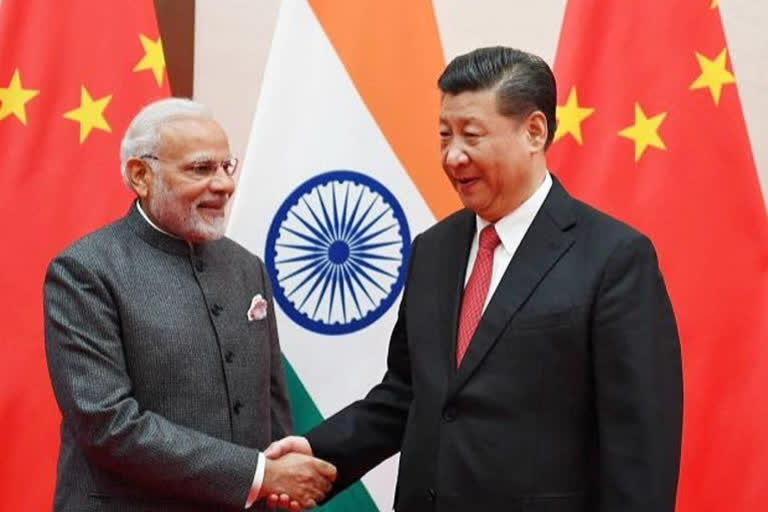New Delhi: Like all the corps commander level meetings of the past few months in eastern Ladakh, the 14-hour-long marathon negotiations on Monday at Moldo, across India's Chushul post, ended without any tangible result as the deadlock persists.
According to a source familiar with the developments, the Chinese side was stubborn in its unmoving military posture in eastern Ladakh and "refused all modes and methods of disengagement from its dominant positions in the north bank of the Pangong Lake, Depsang and Hot Springs areas. Moreover, PLA wanted the Indian army to step down from the newly-occupied dominant positions on the south bank of the Pangong Tso, which was clearly not acceptable."
While no progress was achieved towards easing the deadlock, the two sides agreed to meet within a fortnight, the source added.
The meeting follows a slew of negotiations at various levels ever since the belligerent confrontations began in April-May.
MODI-XI LEVEL TALKS
Having exhausted all mechanisms of negotiation, hope for a resolution now rests only with the top leadership of the two countries. It is so because only PM Narendra Modi and President Xi Jinping, both strongly nationalistic leaders riding the crest of domestic popularity at the moment, have the necessary wherewithal to ink and execute a substantial agreement.
If not, things are bound to get worse on the Line of Actual Control (LAC) paving the way for an escalation even as China may push India into an open confrontation in October. As it is, the standard operating procedures and all protocols of disengagement have broken down.
Read: PLA soldiers fall prey to Bollywood music, latest Ladakh psy-ops ‘in vain’
WHY OCTOBER?
During and after November, the conditions along the LAC become extremely hostile for any human activity. Heavy snow, freezing temperatures, chill factor, not to mention the rarefied air make it near impossible for any human activity to take place, leave alone fighting a war.
On the other hand, maintaining the growing deployment of men and material on the icy Himalayan heights till the melting of the snow may be too much of an economic burden on both the countries.
With the Indian economy on a free fall due to economic factors and the huge COVID 19 hit, the festive season (October-January) and the ensuing 'rabi' crop season have the potential to revive the economy because of the festivals, marriage season and huge demand for consumer durables. It would give a big opportunity to the Indian economy to at least cushion the contracting economy and reduce the losses which are bound to happen.
China, with its penchant for strategic planning, may be looking to jeopardize India's chances of an economic recovery and therefore may seek to escalate on the LAC. As it is, the cost of maintaining an additional 40,000 soldiers along with heavy military equipment may already prove to be a big burden on the economy.
Read: Four key take-aways of India-China negotiations under the Russian sun
VARIOUS LEVELS
While defence minister Rajnath Singh met his Chinese counterpart Wei Fenghe in Moscow on September 4, foreign minister S Jaishankar met his Chinese counterpart Wang Yi on September 10 in Moscow. India’s special representative (SR) on China, Ajit Doval, who is also the National Security Adviser, met the Chinese SR counterpart Wang Yi in a virtual interaction on July 6.
At the level of the corps commander, Monday’s meeting was the sixth lieutenant-general level meeting after June 6, June 22, June 30, July 14 and August 2 at Chushul-Moldo.
But what was unique about the meeting was the participation of Navin Srivastava, the joint secretary in India's foreign affairs ministry in charge of China besides Lieutenant General Harinder Singh, commander, 14 Corps, and Lieutenant General PGK Menon, who is to take over from Lt Gen Singh in October.
JOINT STATEMENT
What was significant in the buildup to Monday's talks was the consensus on taking the September 10 five-point joint statement agreed to by the foreign ministers of the two Asian giants as the basis for resolution.
Read: Logistics war on radar, IAF goes land-hunting for ALGs near China border
Interestingly, the first clause of the joint statement emphasizes on the 'series of consensus' of the 'leaders' in an apparent reference to the broad terms of agreement reached by Prime Minister Narendra Modi and Chinese president Xi Jinping during their ‘informal’ summits at Wuhan (April 27-28, 2018) and Mamallapuram (October 12, 2019).
This reference to the Modi-Xi meets, while being a tacit admission of the abject failure of all existing mechanisms to resolve the border row till now, is also an indication of the need to go back to the Modi-Xi level.
The nature of the India-China problem is such that it can be addressed only at the highest offices of both countries which have the necessary wherewithal and mandate to resolve the longstanding issue. A legacy of a colonial past, negotiations at just the military or diplomatic level cannot address the issue holistically.
HISTORIC MOBILISATION
The India-China negotiations are taking place amid an unprecedented mobilization of soldiers, military assets and logistical arrangements across the Himalayas. At the moment, more than 1,00,000 soldiers are posted on both sides of the LAC and in the depth areas.
Read: 5 Arunachalis picked up by PLA travelled across China's 'Switzerland'
The preparation has led to development of infrastructure and logistics at a breakneck speed.
While China has mobilized its forces in such huge numbers near the LAC for the first time, India is rapidly adapting from a Pakistan-focused military strategy to a China-centric strategy.



